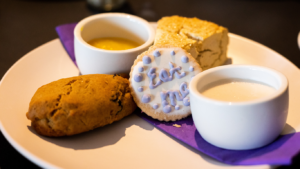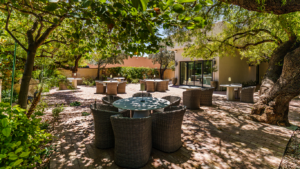Today I’m going to share with you some tips on how to choose the right type of wedding ring for your big day in the UK. Wedding rings are a symbol of love and commitment, and they come in different shapes, sizes, metals, and styles. Here are some things to consider when shopping for your wedding ring.
1. What is your ring size?
Before you start looking for a wedding ring, you need to know your ring size. You can measure your finger at home using a piece of string or paper, or you can use a ring sizer tool that you can order online or get from a jeweler. You should measure your finger in two or three places depending on the size, and compare the measurements with a chart to find your ring size. You should also take into account the width and shape of the ring, as they can affect how it fits on your finger.
2. What shape do you prefer?
Wedding rings come in different shapes, such as court-shaped, D-shaped, flat, flat court, halo, and shaped. The shape of the ring affects how it looks and feels on your finger, as well as how it matches your engagement ring if you have one. Here are some examples of wedding ring shapes:
Court shaped: This is the most classic and comfortable shape, as it is slightly rounded on both the outside and the inside of the ring.
D shaped: This shape is curved on the outside but flat on the inside, creating a D shape cross section. It is also a popular and comfortable choice for many people.
Flat: This shape is flat on both the outside and the inside of the ring, creating a sleek and modern look.
Flat court: This shape combines the flat outside of the flat shape with the rounded inside of the court shape, offering a comfortable fit and a contemporary style.
Halo: This shape features a thin band with a row of small diamonds around it, creating a halo effect. It is a glamorous and eye-catching choice for those who want some sparkle on their wedding ring.
Shaped: This shape is designed to fit around a fancy-shaped engagement ring, such as a pear, marquise or princess cut. It can be curved, twisted, or notched to complement the shape of the engagement ring.
3. What metal do you like?
Wedding rings are usually made from precious metals, such as gold, platinum, palladium, or silver. The metal you choose can affect the durability, color, and price of your wedding ring. Here are some pros and cons of different metals:
Gold: Gold is the most traditional and popular metal for wedding rings. It comes in different colors, such as yellow, white, or rose gold. Yellow gold is warm and classic, white gold is cool and modern, and rose gold is romantic and trendy. Gold is also easy to work with and can be engraved or embellished with diamonds or other gemstones. However, gold is also soft and prone to scratches and dents over time. It also needs regular polishing and cleaning to maintain its shine.
Platinum: Platinum is a rare and expensive metal that offers a high level of durability and quality. It has a silvery-white color that does not fade or tarnish over time. It is also hypoallergenic and resistant to corrosion and scratches. However, platinum is also heavy and dense, which may not suit everyone’s preference. It also requires special care and cleaning to avoid dulling its surface.
Palladium: Palladium is a similar metal to platinum but cheaper and lighter. It has a similar color and durability as platinum but does not need special care or cleaning. It is also hypoallergenic and resistant to corrosion and scratches. However, palladium is not as widely available as other metals and may be harder to find or customize.
Silver: Silver is a cheap and versatile metal that offers a bright and shiny color. It is easy to work with and can be engraved or embellished with diamonds or other gemstones. However, silver is also soft and prone to scratches and dents over time. It also tarnishes easily and needs regular polishing and cleaning to prevent oxidation.
You can find all types of wedding rings which are hand picked by the experts on abelini.




